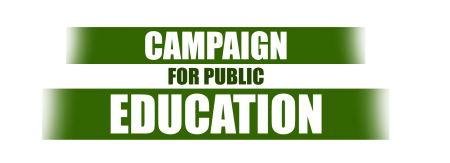ongoing neglect of our youth
Equity Policy Advisory Committee
of the Toronto District School Board
Submission to the School Community Safety Advisory Panel Mr. Julian Falconer, Chair
November 7, 2007
“…schools cannot be separated from the larger community. They spring from and form part of the community surrounding them. The social issues that plague the communities outside our schools – such as racism, sexism, violence, poverty and alienation – are also reflected in our schools from one end of the GTA to the other.”
( An Interim Report on School Safety – August 28, 2007 – p. 2 )
“…addressing the root causes of violence and crime must be a high priority.” ( p. 3 )
INTRODUCTION We welcome this opportunity to submit our thoughts and vision for the Toronto District School Board as your investigation into the nature of violence at CW Jefferys Collegiate, its various root causes and consequences and its implications for the school, for NW2 and for the TDSB as a whole – following the violent death of TDSB student Jordan Manners – proceeds. The impact of that murder has certainly had a profound impact on the school, on the school community as well as the TDSB system as a whole. That such an unneces-sary and unfortunate death be a ‘wake up’ call to long-pending decisive action is crucial…..
WHO WE ARE
The Equity Policy Advisory Committee (EPAC) is made up of representatives of a broad spectrum of recognized community-based equity seeking groups and organizations that share a common interest and commitment to the foundational role of equity in education, together with representatives from the recognized TDSB Community Liaison Groups, parent members as well as designated TDSB staff and Trustees. It is EPAC’s role to provide guidance and advice to the Toronto District School Board (TDSB) on matters concerning the full and most effective implementation of the Board’s Equity and Human Rights related policies and commitments.
EPAC also identifies issues of broad community interest regarding equity in education, for the consideration of the TDSB, its Trustees and its staff. At root of all the committee’s activities is the principle that equity of opportunity & of access to all programs, services, supports and resources is critical to the fair achievement of equitably successful learning outcomes for all students across the TDSB.
CONCERNS As repeatedly echoed in the Advisory Panel’s Interim Report the apparent youth-on-youth violence that led to the tragic death of 15 year old CW Jefferys student Jordan Manners is not an isolated incident or challenge :
Such violence is not a problem at C.W. Jefferys alone. It is an issue that all schools in the system face – as in fact it is a shared structural or systemic challenge that communities right across the City of Toronto – and their schools – need better comprehend & address.
Youth violence and its social determinants involve both a wide range of activities and behaviours as well as a complex set of causes & conditions – and each must be examined in a fuller societal context starting from the one end of individual disrespect, verbal abuse or harassment, through to bullying and physical assaults and on to the use of weapons.
The student surveys commissioned by the Advisory Panel support the assertion that the most common forms of violence as experienced by students are that of minor theft and verbal harassment ( ie. insults and teasing ) but also document concerns with respect to physical threats and physical assaults, often associated with the targeting of racialized female students. Not surprisingly given the systemic inequities that drive these socially disruptive behaviours and personally destructive dynamics – these findings echo those from the much broader Toronto Youth Crime & Victimization Survey (2000 ).
When we consider the further student survey responses with respect to the experience of teacher bias, discrimination, disrespect and differential treatment – combined with the long-standing institutional inequities, systemic exclusions and other structural factors as they impact racialized and other historically marginalized communities in Toronto – it all contributes to a climate of fear, anger, mistrust and potential violence.
Thus such incidents of youth-on-youth violence in the TDSB – such as Jordan’s untimely death – cannot be resolved without a clear recognition that the fuller challenge is a shared societal one, with explanations that spread and indeed start far beyond the school yard.
This institutional, structural and systemic violence impacts directly and indirectly with respect to all forms of youth violence – which in turn impacts on the ability of the TDSB to deliver on its commitment and obligations to provide equitable access to programs and resources – thus leading to equitable learning outcomes for all learners in its system.
SOLUTIONS Just as the problem is multifaceted so must be the solutions :
Providing for the daily safety or security needs of students through hall room monitoring – and even under very limited circumstances other proposed solutions such as installation of video cameras – can be important so students can comfortably focus on their learning.
But as recommended by the students themselves in their survey responses the priority approaches & interventions – as they are both preventative as well as responsive – need be a more equitable allocation of TDSB resources that provide for the needed enhanced extra-curricular and after school programming as well as a broader range of dedicated counseling and other personal supports.
Our fear is that this entire Advisory Panel exercise will be informed by a “bricks and mortar” approach to the challenge – resulting in the all too common, narrowly conceived and short-sighted law and order “bandage” – that just puts salve on the symptoms but does little to address and redress the real underlying causes. What we don’t need are more anti-bullying and other safe schools and discipline informed interventions and punitive style measures – no surveillance cameras, security passes, school uniforms, metal detectors or more policing. Though intellectually or emotionally satisfying and reassuring for some – such simplistic safety and security measures do not address the “illness” or “disease” and have been shown to have little if any real long-term benefit or effect.
As is called for within the TDSB’s standing Equity Policy Framework we need a school and board-wide equity auditing procedure that regularly takes a comprehensive equity & inclusion lens approach to the TDSB & its day-to-day school & system-wide operations, policies, structures, procedures, programmes, practices and resource allocations.
Such an equity review is needed of all safe school related policies & practices, including safe-school transfers, so to insure that such practices are not contributing to built-in or structural inequities. The negative impact on the Board’s equity policy commitments has been seen with the earlier “zero tolerance” safe schools policies of the Board.
Examining CW Jefferys as well as the entire TDSB system in this way is fundamental to creating the kind of learning environment spoken to by a CW Jeffery’s student who earlier appeared anonymously before the Panel – “Plant peace in their minds and let them grow with it.” ( Interim Report – p. 30 )
The solution therefore for the most part does not lie in more degrees or multiple forms of discipline – which clearly have an inequitable result, but rather in focusing on prevention.
Solutions lie in an integrated approach across classrooms, schools, school clusters and quadrants – with an equity consciousness and analysis informing the TDSB and its work from central administration through to all the distant appendages of the institution.
Equity and inclusion well understood and well practiced – is by definition violence preventing programming and support – that builds on individual self-esteem & reinforces healthy alternatives to violence in all interpersonal & inter-group interaction & exchange.
Without strong, targeted and ongoing funding for such a comprehensive equity policy commitments implementation, no long-term effective solutions are possible. Funding for comprehensive and inclusive programs and supports that build an understanding and appreciation of the richness of all the TDSB’s diversity – from elementary to secondary, from pre-school through to continuing education – student, staff and partners – is crucial.
It is in building the individual and collective capacity to embrace and appreciate this rich human diversity that will serve to pre-empt most interpersonal and group conflict as well as work to ensure that most such violence can be best avoided.
Funding need also be made available – reallocated to start – for the necessary dedicated trained staff ranging from youth workers, attendance councilors, school community advisors, psychologists, guidance counselors, hallway monitors, the resourcing of school “Equity Committees” as opposed to “Safe School Committees” as well as transitional and other support workers that work with vulnerable youth – is also critical. We need to best assist and support the diverse student and community populations that make up the TDSB – as well as the “walking wounded” as Dr. Akua Benjamin referenced the historically and currently marginalized and excluded in her appearance before the Panel ( p. 23 ).
Systematic and integrated approaches that focus on social determinants such as racism, homophobia, sexism, able-ism, poverty, living conditions, housing, parenting supports, immigration status, substance abuse and the like – are at the foundation of building truly effective long-term solutions.
CONCLUSION “Put another way, the death of Jordan Manners should not be seen as an isolated incident, but rather as a disturbing harbinger of things to come if we, as a society, do not put a stop to the ongoing neglect of significant numbers of our youth.” ( Interim Report – p. 3 )
Since 1998 & the amalgamation of the seven legacy school boards the TDSB has been terrifically handcuffed by the inadequacies of the provincial funding formal – providing as poorly as it has/does for the unique & multiple needs & challenges as faced by school boards & ethno-racially & otherwise diverse communities in Ontario larger urban centres.
While short term measures can be put in place, it’s clear that long-term sustainable equity programming that takes an integrated & broad view of the problem must be the priority of the TDSB as well as the province. Building institutional as well as personal capacity for equity and inclusion – student, staff and partners – on a preventative intervention basis must be the key component of any successful anti-violence strategy.
In building such a framework for healthy learning environments – the TDSB’s equity policies and related commitments must be considered as central – thus serving to inform such a process at every stage and at every moment. From anti-bullying, peer mediation, progressive discipline, grids of consequences, safe schools transfers and suspensions and expulsions – through to equitably reflective curriculum, staffing and programming we need embrace the TDSB equity policy framework as the path toward both restorative justice as well as social inclusion and cohesion and societal healing more generally.

